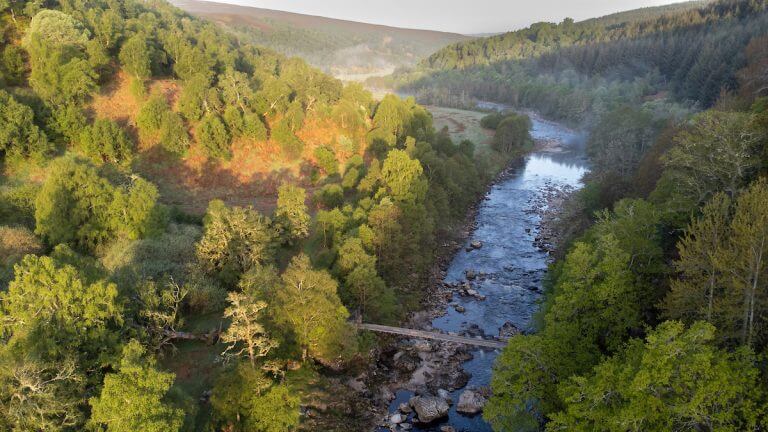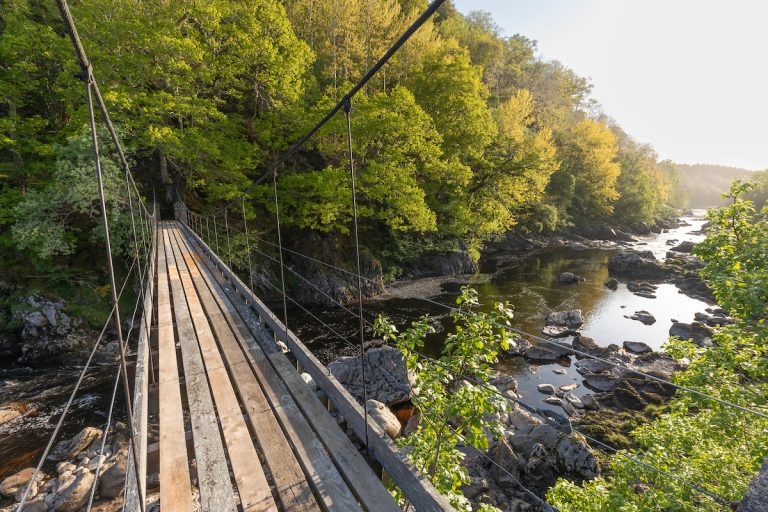

Findhorn, Nairn and Lossie Rivers Trust
Scotland’s District Salmon Fishery Board’s are constituted regulatory bodies who are governed by the Salmon and Freshwater Fisheries (Consolidation) (Scotland) Act 2003.
There are forty one Board’s in total, three of these fall within the geographic area covered by the Findhorn, Nairn and Lossie Rivers Trust (FNLRT). They are separate organisations whose purpose is the deployment of statutory powers and duties to facilitate the protection and improvement of salmon and trout fisheries within their rivers.
In the case of the Findhorn District Salmon Fishery Board and the Lossie District Salmon Fishery Board, the FNLRT provide administrative and management support along with the expertise of our resident biologist.


The District Salmon Fishery Boards (DSFB’s) have the legal power to raise funds to enable them to fulfil their role outlined above.
Each salmon fishing is valued by the local authority district assessor every five years, this value is informed, largely, by the catch rates within each fishery, and is a form of non-domestic rate.
The DSFB’s can set a rate in the pound against these assessment values for each fishing within the district and in this way, are able to raise funds which can then be used for fishery management.
The powers granted to DSFB’s also enable the appointment of water bailiffs to enforce the provisions laid out within the Salmon and Freshwater Fisheries (Consolidation) (Scotland) Act 2003. The powers granted to water bailiffs for the pursuance of the Act can be found here.
Many pressures impinge on a river system and affect the performance of the fish stocks. Arguably the greatest factor affecting salmonid stocks at the moment is sea survival. Survival rates for salmon smolts to returning adults are currently very low, 5% or less, and survival rates for sea trout also seem to be low.
Work is underway to improve our understanding of the salmon and sea trout’s life at sea but this is highly expensive and beyond the scope of most Fishery Boards. However, with poor survival rates evident at sea it is essential that the natal rivers are kept in good order to maximise the output of natural wild salmon sea trout stocks.
A large number of factors affects the condition of the rivers and fisheries, including: distilleries, wind farms, flood alleviation schemes, barriers to migration, agricultural and forestry practices, quarrying, invasive non-native species and illegal fishing. Each river is graded from Good to Moderate to Poor by Scottish Government, this grading then dictates the fishery management measures applied to each river as part of efforts to conserve the Atlantic Salmon in Scottish rivers. Currently the rivers Findhorn and Nairn are graded good while the river Lossie is poor. More information on how these gradings are made can be found on the Scottish Government’s website.
The River Nairn, located in the Scottish Highlands south and east of Inverness, flows through mountains, moorland and farmland to the Moray Firth, approximately 36 miles away.
The River Findhorn is one of the longest rivers in Scotland. It rises in the Monadhliath Mountains and flows to the Moray Firth on the north east coast, where it has one of the largest non-firth estuaries in Scotland.
The river is 62 miles long and has a catchment area is 1,300 square kilometres.
The River Lossie originates in the hills above Dallas, in Moray, and has its source 400 metres above sea-level. It is 32 miles long and enters the sea at Lossiemouth on the Moray Firth.